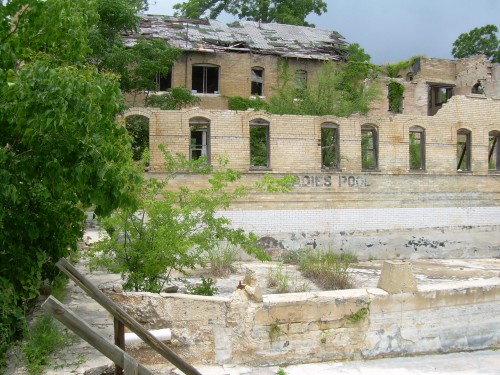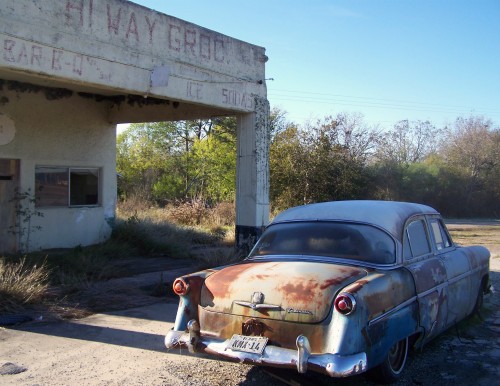Ruins of the bath house, at the side of the old Hot Wells Resort, South San Antonio
 Sgt. Mom
Sgt. Mom
Watching the Meme Go By
So, I’ve watched the media-puffed Trayvon Martin meme go sailing by and crash upon the iceberg of reality. Now it’s holed below the waterline, sinking fast, and a fair number of people who bought into it for one reason or another have quietly ducked into the nearest lifeboat and paddled away. They’re the most sensible element, of course: the rest are lined up on the boat deck, singing ‘Nearer My God To Thee’. Like a number of particularly deluded specimens at Open Salon, whose theme seems to be ‘Now we see the violence inherent in the system!’ alternating with choruses of ‘It’s all white people’s fault’. And for the record, no I haven’t gone around the OS threads arguing with any of these nimrods, or attempting to put them straight. Life is too short, and I have too much on my plate at this time to try and apply logic and good sense talking them out of a position that logic and good sense never had a hand in putting them into. As an old Air Force mentor of mine was wont to observe, ‘Sometimes ya just gotta stan’ back an’ let them fall on their sword. If ya wanna, afterwards ya can pull out the sword, wipe off the blood an’ ‘splain to them where where they went wrong…”
I Like Men…
Like them, appreciate them, adore them for their ability to wade in there and … fix stuff. I like them for all those qualities and more, although sometimes they exasperate me, and I have been exposed to slightly more than my statistical fair share of total male fahrk-quads. Twenty years in the military will do that to you. At best, it’s an 85% plus male-dominated profession, and one is guaranteed to observe them in their masculine glory and also at their absolute piggish worst. But on the whole, I like men when they shoulder responsibility, when they are stand-up great co-workers, when they are good in bed and fantastic with amusing children, when they come to your physical and emotional rescue which they will do and when they give those perfectly thoughtful and slightly skewed gifts. From one long-time Significant Other, I got a birthday-Christmas present of two pallets of bricks. Yes, but it was what I really-oh-truly-oh-really wanted and I had said so. Dad once gave me a metal tool-box as a Christmas present, for pretty much the same reason.
Dr. Jekyll & Mr. Slade – Conclusion
But Jack Slade was not quite dead. Some stories have it that he looked up at Jules Beni and gasped, “I’ll live long enough to hang your ears from my watch chain!” The two stage drivers carried him into the station and laid him in a bunk. Almost before the smoke had cleared, a westbound stage pulled into Julesburg, carrying Slade’s immediate boss, the operations superintendent on his own tour of inspection. Accounts differ on what happened to Jules Beni upon being arrested by the outraged operations superintendent. Without provocation, Jules Beni had gunned down an unarmed man in front of witnesses. Anyway it was sliced on the frontier; it came out as cold-blooded murder. Although Jack Slade was still breathing, everyone seemed fairly certain he wouldn’t continue to do so for long. Beni was hung from an improvised gallows and half-strangled; either the rope broke and he managed a daring getaway, or the superintendent ordered him let down and extracted a promise that he would depart immediately and at speed, and stay the hell away from the division. The Pony Express had a real-time test, as one of the newly-hired riders was sent galloping hell for leather to the Army post at Fort Laramie two hundred miles away the nearest place to find a doctor.

